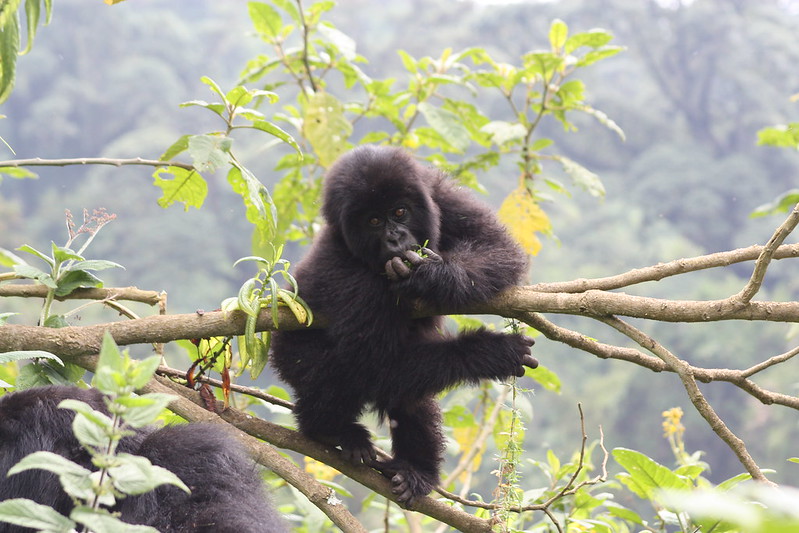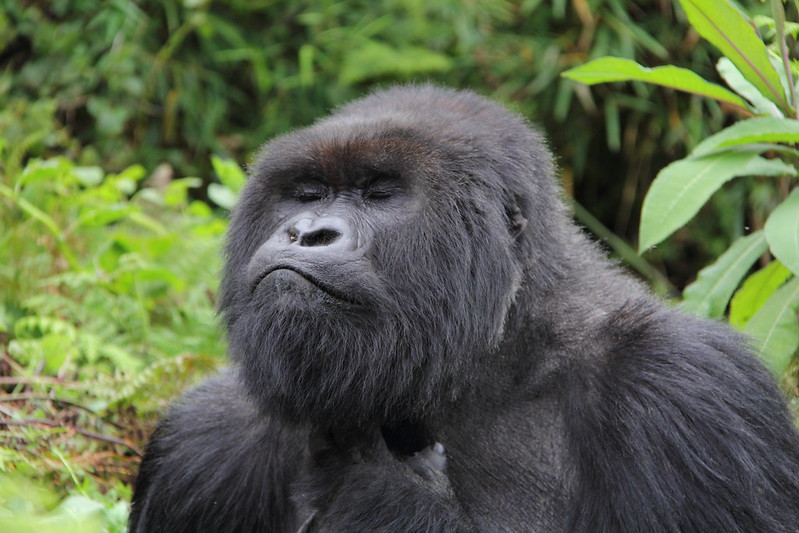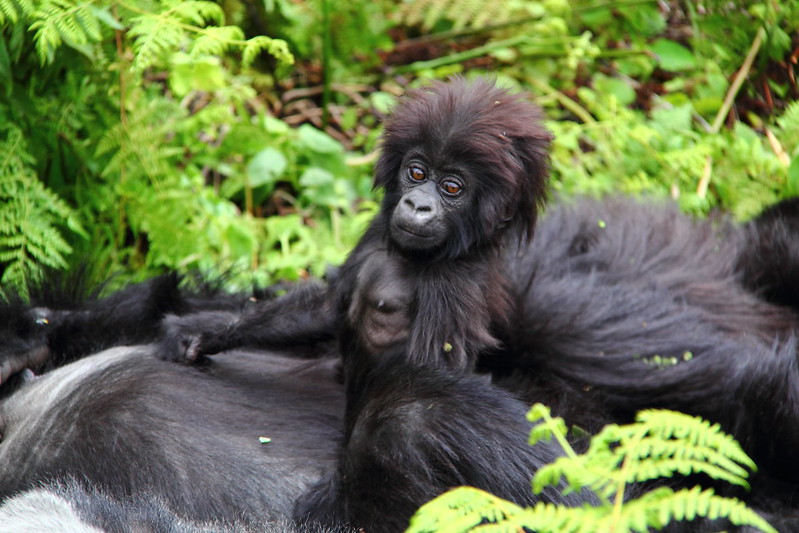Uganda Bwindi Gorilla trekking. The bwindi gorilla walk in Uganda is a once-in-a-lifetime opportunity to…
Which Season is Best for Gorilla Trekking?
Which Season is Best for Gorilla Trekking?
Gorilla trekking is one of the most exhilarating wildlife experiences on the planet. Tracking and observing the majestic mountain gorillas in their natural habitat is an unforgettable adventure that attracts travelers from around the world.
However, one of the most important decisions to make when planning your gorilla trekking adventure is choosing the right season to go. The timing of your visit can significantly impact the experience, as weather, trekking conditions, and availability of permits all play a role in the overall success of your trip.
So, when is the best season for gorilla trekking? This comprehensive guide explores the different seasons in both Uganda and Rwanda, two of the prime destinations for gorilla trekking, and provides tips to help you decide when to go.
1. Understanding Gorilla Trekking Seasons
Gorilla trekking is typically done in two key regions:
- Uganda: Bwindi Impenetrable National Park and Mgahinga Gorilla National Park.
- Rwanda: Volcanoes National Park.
Both regions are known for their rich biodiversity and are home to endangered mountain gorillas. The trekking experience is largely dependent on the weather, which can vary greatly across different seasons.
2. The Dry Season: The Peak Time for Gorilla Trekking
2.1 Uganda’s Dry Season (June to September & December to February)
Uganda experiences two dry seasons:
- First Dry Season: From June to September
- Second Dry Season: From December to February
During the dry seasons, the weather is less rainy, making trekking conditions more favorable. The trails in Bwindi Impenetrable National Park and Mgahinga Gorilla National Park are less slippery, and the gorillas are easier to spot since they tend to stay at lower altitudes where vegetation is less dense.
- Benefits of the Dry Season:
- Easier Trekking: The trails are drier, less muddy, and more accessible, reducing the physical challenge of trekking through thick rainforests.
- Increased Gorilla Visibility: The gorillas tend to stay at lower altitudes during dry weather, making them easier to track.
- Better Weather for Photography: With less rainfall, you’re more likely to have clear skies for photography, especially for capturing the breathtaking scenery.
- More Comfortable Experience: The warm but not excessively hot weather makes for a more pleasant trekking experience.
- Considerations:
- Higher Demand: The dry season is the peak period for gorilla trekking. This means more tourists are visiting, and permits may sell out quickly. It’s advisable to book your trip well in advance.
- Higher Prices: With increased demand, prices for accommodations and permits may be higher during this season.
2.2 Rwanda’s Dry Season (June to September & December to February)
Rwanda also experiences two dry seasons:
- First Dry Season: From June to September
- Second Dry Season: From December to February
The dry season in Rwanda is generally similar to Uganda in terms of weather. During these months, the trails in Volcanoes National Park are less muddy, making trekking conditions easier. The gorillas in Rwanda also tend to move lower into the mountains, making sightings more common.
- Benefits of the Dry Season:
- Easier Trekking: The drier conditions make hiking the sometimes-steep trails of Volcanoes National Park more manageable.
- Favorable Weather: The dry season ensures more stable weather, making it ideal for outdoor activities.
- Clearer Views: The landscape is lush and green, and the mist often dissipates, offering clearer views of the gorillas and the surrounding scenery.
- Considerations:
- Higher Tourist Numbers: Like Uganda, Rwanda experiences a surge in tourists during the dry season. It is essential to book permits early to secure a spot.
- Premium Costs: Due to high demand, permit prices are generally higher, and lodging prices may also increase.
![]()
3. The Wet Season: Off-Peak But Still Worth Considering
3.1 Uganda’s Wet Season (March to May & October to November)
Uganda’s wet seasons are:
- First Wet Season: From March to May
- Second Wet Season: From October to November
While trekking during the wet season can be more challenging, it also comes with some unique advantages. The rainforests in Bwindi Impenetrable National Park and Mgahinga Gorilla National Park are at their greenest, offering an entirely different experience compared to the dry season.
- Benefits of the Wet Season:
- Fewer Tourists: The wet season is the off-peak time, meaning there are fewer tourists, and you’ll likely have more privacy during your trek.
- Lower Costs: Gorilla trekking permits and accommodation costs are generally lower during the wet season, making it a more budget-friendly option.
- Lush Greenery: The forest is at its most vibrant, and the rains make the landscape even more beautiful, with lush vegetation and plenty of wildlife.
- Considerations:
- Muddy Trails: The heavy rain can make trails slippery and challenging to navigate. You’ll need to be prepared for a tougher physical challenge.
- Unpredictable Weather: You may experience rain showers during your trek, which could impact visibility and comfort. However, the rain is usually intermittent and doesn’t last all day.
3.2 Rwanda’s Wet Season (March to May & October to November)
Rwanda shares a similar wet season with Uganda, with heavy rainfall occurring from:
- First Wet Season: From March to May
- Second Wet Season: From October to November
The wet season in Rwanda tends to be slightly milder in terms of rainfall compared to Uganda, but it still impacts trekking conditions. While the gorillas may be a little harder to track, the rainforest’s lush green beauty during this season is unparalleled.
- Benefits of the Wet Season:
- Fewer Tourists: As with Uganda, fewer people visit Rwanda during the wet season, meaning you’ll have more solitude and a more intimate experience.
- Lower Prices: Lower prices for permits and accommodations make this an appealing option for budget-conscious travelers.
- Stunning Landscape: The rainy season creates a vibrant, green landscape, making it a photographer’s paradise.
- Considerations:
- More Challenging Trekking: The wet season makes the trekking conditions more difficult, with slippery trails and the possibility of getting wet.
- Unpredictable Weather: The rain can be intense, and while it’s usually in short bursts, it can affect your trekking experience, limiting visibility and comfort.
4. Best Time to Visit for Gorilla Trekking
While the dry season (June to September and December to February) is the most popular and easiest time to go gorilla trekking in both Uganda and Rwanda, the wet season (March to May and October to November) offers its own set of benefits, particularly for those looking for a quieter, more affordable experience.
Consider the Following Factors When Choosing Your Season:
- Budget: If you’re looking to save money, the wet season is the most affordable time to trek gorillas.
- Crowds: If you prefer to avoid the crowds, consider visiting during the wet season when fewer tourists visit.
- Weather Conditions: If you want the most favorable weather for trekking, the dry season is your best bet, offering more comfortable conditions.
- Wildlife Viewing: The dry season offers better visibility, as the gorillas tend to move to lower altitudes where vegetation is less dense.
The Best Season for Gorilla Trekking
The best season for gorilla trekking largely depends on your preferences. If you prioritize easy trekking conditions, clearer skies for photography, and more comfortable weather, the dry season (June to September and December to February) is the ideal choice. However, if you’re looking for a more affordable, peaceful experience with fewer tourists, the wet season (March to May and October to November) could be a perfect fit, provided you’re prepared for muddy trails and occasional rain.
Ultimately, both seasons offer unique benefits, and with proper planning, any time of year can be a great time to embark on the unforgettable adventure of gorilla trekking.


